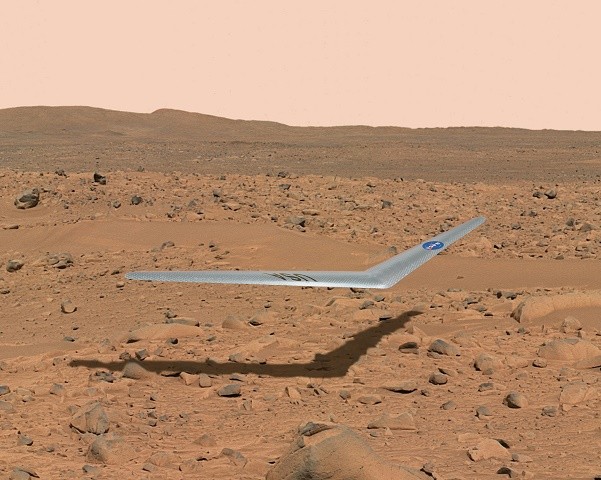NASA officials have announced that an aircraft will now explore Martian terrain where the vehicle can be transported via folding and packing inside a tiny CubeSat satellite while it journeys towards Mars. Mission engineers believe that such a project can carry out this flight over the surface of Mars by the year 2022.
However, during descent, aeroshells are utilized in order to absorb heat for a trip through Martian atmosphere where it is required to lay off ballast from two different points while descending, to maintain balance and alleviate weight.
However transporting this type of material that will constitute the ballast all the way from Earth and then bringing it to Mars just to throw it away costs more and will not even return any scientific benefits. Now, NASA is figuring out ideas how to use this ballast for a secondary scientific purpose which is now known as NASA's Mass Balance Challenge.
The Martian airplane called the Preliminary Research Aerodynamic Design to Land on Mars (Prandtl-m) will now provide mass for a safe and stable entry through the alien atmosphere where it is specifically designed to travel through the thinning atmosphere and also gather important data for the next manned mission to the Red Planet.
According to program manager Al Bowers, this plane will be deployed and then fly over Martian atmosphere by gliding upon touch down. Prandtl-m will now survey among proposed landing sites over Martian terrain and send back highly detailed images and maps for scientists to decide the sustainability of the landing sites.
Using CubeSats, the Prandtl-m will be transported within these satellite units and then released from the aeroshell of a Martian lander. CubeSats are really small shells that look like cubes, measuring four inches on every side and can be stacked together where they serve as fully functioning satellites. When they are stacked together, they form a 3U CubeSat where the Prandtl-m will be housed during transit.
When the Prandtl-m unfurls its wings, it can cruise an altitude of 2,000 feet across 20 miles within 10 minutes.



























